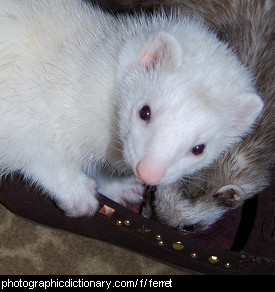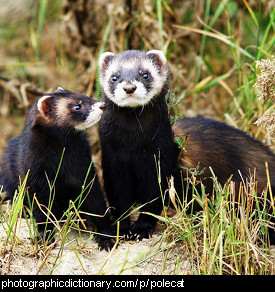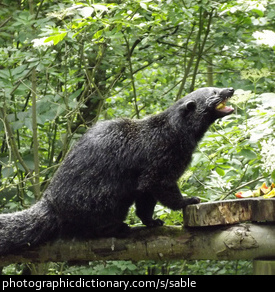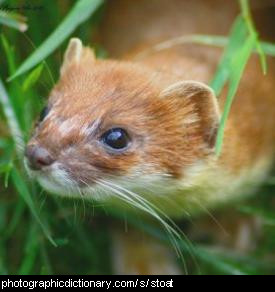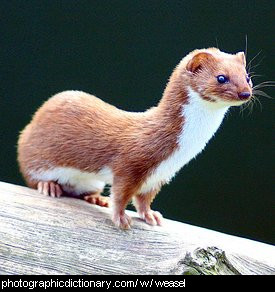Scientific name: meles meles (European badger)
Badgers are related to weasels, otters, wolverines and ferrets. They eat small animals and sometimes insects. Badgers come from Europe. They are excellent diggers, and make themselves burrows called setts.
A male badger is a boar, a female badger is a sow and a baby badger is a cub. The collective name for a group of badgers is a cete.
Scientific name: mustela putorius furo
Scientific name: suricata suricatta
Meerkats are members of the mongoose family that is native to parts of Africa. They live in large groups, with 20 to 30 members in a group. They live in burrows underground. Meerkats eat mostly insects but will also eat anything else small they can catch. They are immune to scorpion venom.
When meerkats are out looking for food during the day, some members of their group will stand guard and tell the group of they see any predators coming.
Scientific name: neovison vison (American mink) and mustela lutreola (European Mink)
Scientific name: lutra lutra (Eurasian otter)
Scientific name: mustela putorius
Scientific name: family mephitidae
Skunks are medium sized animals best known for their ability to make a really bad smell. They can squirt their stinky substance several feet with great accuracy. The smell is bad enough to scare even a bear away, and a person can smell it from a mile away. The smell is almost impossible to wash out of anything it has touched.
Skunks sleep during the day and night and come out at dawn and dusk to look for food. Skunks eat insects, mice, small lizards, salamanders, frogs, snakes, birds, moles, and eggs. They also eat berries, roots, leaves, grasses, mushrooms, and nuts.
There is some debate about whether skunks are related to weasels or if they are alone in their own family.
Scientific name: mustela erminea
Scientific name: genus mustela




